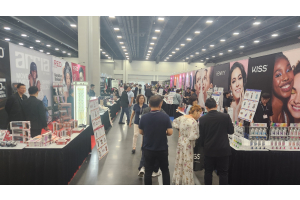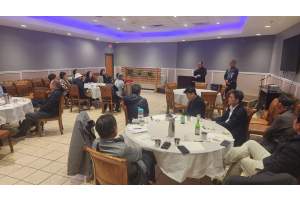[컬럼] 씬테틱 브레이딩 헤어 논란, 과학적 문제인가 감정적 선동인가
![[컬럼] 씬테틱 브레이딩 헤어 논란, 과학적 문제인가 감정적 선동인가](https://cosmobiz.com/media/wysiwyg/Seminar_AI_image2.png)
씬테틱 브레이딩 헤어가 논란의 중심에 섰다. 발암 물질이 검출되었다는 이유다. 지역 방송사들이 연이어 보도하면서, 이 이슈는 흑인 사회 내에서 빠르게 확산되었고, 뜨거운 감자로 떠올랐다. 방송이 나간 지 닷새째 되는 날, 이 문제가 얼마나 퍼졌는지를 확인하기 위해 다섯 명의 미용사에게 물었다. 놀랍게도 모두가 이미 알고 있었고, 대부분 씬테틱 헤어가 암을 유발할 수 있다고 확신하는 분위기였다. 특히 납과 벤젠을 핵심 키워드로 문제를 인식하고 있는 듯했다.
납과 벤젠이 인체에 유해하며, 암을 유발할 가능성이 높은 물질이라는 것은 삼척동자도 아는 보편적 상식이다. 정부 기관이 설정한 기준을 초과해 검출되어서는 안 되는 물질이기도 하다. 따라서, 이들 유해 물질이 씬테틱 헤어의 생산 과정에서 사용되는지, 그리고 얼마나 방출되는지를 제조업체가 다시 한번 확인하는 기회로 삼을 필요가 있어 보인다. 특히, OEM 방식으로 제품을 생산하는 기업의 입장에서는 더욱 그렇다.
씬테틱 브레이딩 헤어를 제조하는 과정에서 반드시 납이나 벤젠을 사용해야 하는 것은 아니다. 인체에 유해할 정도로 방출된다면 굳이 사용할 필요가 없다는 의미다. 그럼에도 불구하고 사용되었다면, 인체에 유해하지 않은 범위 내에서 제품의 품질을 높이기 위한 목적이었는지도 고려해 볼 필요가 있다.
컨수머 리포트의 보고서에는 이해하기 어려운 점이 많다.
첫째, 과학적 연구에서 가장 중요한 것은 실험 방식의 객관성이다. 거의 모든 실험에는 Test Protocol이 존재하며, 실험 목적에 따라 실험 방식이 정해져 있다. 심지어 어떤 측정 도구를 사용해야 하는지까지 명확하게 규정할 만큼 엄격한 기준이 요구된다. 그러나, 이번 실험이 과연 일반적인 착용 상황에서 유해 물질에 노출되는지를 시험한 것인지, 아니면 특수한 상황에서 유해 물질에 노출될 위험 정도를 측정하기 위한 것이었는지가 불분명하다.
보고서에 따르면, 컨수머 리포트의 실험 방식에 대해 헤어존(Hair Zone) 사와 Magic Fingers 사 측도 즉시 문제를 제기했다고 한다. 일반적으로 실험 프로토콜에 대한 문제가 제기될 경우, 연구진과 보고서 작성자는 연구 방식의 선택 이유를 설명하고, 문제를 제기한 측과 논의하여 객관적인 실험이 진행될 수 있도록 조정하는 것이 관례다. 그러나 보고서에는 헤어존 측의 문제 제기에 대해 어떤 조치를 취했으며, 어떤 근거로 해당 실험 방식을 선택했는지에 대한 설명이 없다. 나머지 다른 헤어 회사는 답변이나 의견조차 내지 않았거나 못한 것으로 밝혀졌다.
제품의 안전성을 평가하는 실험은 제품의 실제 사용 환경을 반영하는 것이 기본 원칙이다. 하지만 보고서를 보면, 끓는 물에 브레이딩 헤어를 담근 후 발생하는 기체에서 유해 물질을 검출한 것으로 보인다. 그러나 소비자들이 매일, 그것도 24시간 동안 브레이드를 끓는 물에 담가 두는 것은 아니다. 이에 대한 설명이 없다.
이런 특수한 상황을 염두에 두었다면, "끓는 물에 담그려면 밀폐된 공간이 아닌 개방된 공간에서 시술하라"는 경고 문구 삽입을 권고하면 될 문제다. 또한, 헤어 원사에 불을 붙여 유해 물질을 검출했다는 부분도 논란의 여지가 있다. 일반적인 소비자가 헤어에 불을 붙이고 다닐 가능성은 거의 없다.
브레이드의 끝부분이 풀리지 않도록 불을 사용하는 과정에서 유해 물질이 방출된다면, "유해 물질이 방출될 수 있으므로 불 대신 네일 글루와 같은 대체제를 사용할 것"이라는 경고 문구를 추가하도록 권고하면 될 문제다. 물론, 뜨거운 물에 닿을 수 있는 샤워 환경이나 화재 상황을 고려한 실험이라면 납득할 수 있지만, 실험의 의도와 보고서 내용이 일치하는지는 컨수머 리포트 편집진이 해명해야 할 부분이다.
대부분의 제조업체는 제품 안전성 및 안정성 테스트(Safety and Stability Test)를 자발적으로 시행한다. 이는 단순히 정부 규제를 준수하기 위해서가 아니라, 소비자를 보호하고 제품의 변질 여부를 확인하기 위한 목적이 크다. 또한 보험회사에서 요구하는 경우도 많다. 만약 보고서가 지적하는 문제가 실제로 존재하는 심각한 수준이었다면, 기존의 안전성 및 안정성 테스트에서 이미 지적되었을 가능성이 높다. 따라서, 실험이 공인된 방식(Test Protocol)에 따라 진행되었는지 의문을 제기하는 것이다.
보고서를 쓴 작가가 헤어 제품 전문가가 아니라서 모를지 모르겠지만, 씬테틱 헤어는 1960년대부터 백인 가발 산업에서 먼저 사용되었다. 당시 캔자스에 소재했던 미국 기업을 비롯해 독일, 일본 등 여러 나라 기업들이 경쟁적으로 더 좋은 씬테틱 원사를 개발하기 위해 지난 70여 년 동안 끊임없이 노력해 왔다. 다시 말해, 씬테틱 헤어는 흑인 소비자만을 위해 개발된 것이 아니다. 그런데도 이를 인종 문제와 연결 짓는 것은 감당하기 어려운 오류다.
더욱 심각한 문제는, 보고서가 불에 태우거나 끓는 물에 담근 상태에서 검출된 유해 물질을 근거로 독자의 신뢰를 확보한 뒤, 이와 전혀 관련 없는 반(反)흑인 문제를 거론하며 씬테틱 브레이드 헤어를 인종 문제와 연결 짓고 있다는 점이다.
보고서는 베일러 의과대학 방사선 종양학자이자 조교수인 크리스티나 채프먼(Christina Chapman) 의 발언을 인용하며, "반흑인 정서와 시스템적인 차별이 흑인 여성들의 암 발병 원인이 될 수 있다"고 주장한다. 그러나 흑인 차별과 씬테틱 브레이드 헤어의 유해성이 도대체 어떤 연관이 있다는 것인지 이해하기 어렵다.
만약 컨수머 리포트가 이런 사실을 알면서도 이 보고서를 발표했다면, 이는 단순한 오류가 아니라 명백한 왜곡으로 보이며, 인종 간의 갈등을 조장하는 위험한 행위로 해석될 수밖에 없다. 필자는 대중의 존경과 신뢰를 받고 있는 컨수머 리포트가 이런 사실을 알고도 발표한 보고서는 아니라고 믿고 싶다.
이에 대해 컨수머 리포트 편집진은 반드시 해명해야 할 필요가 있다. 코스모비즈는 컨수머 리포트의 책임 있는 답변을 기다리며, 공개 토론이나 사실 확인을 위한 논의가 이루어진다면 기꺼이 참석하여 사실을 바로잡는 데 기여할 준비가 되어 있다. [코스모비즈]
아래는 컨수머 리포트지와 관계자들의 이해를 돕기위해 위의 컬럼을 영문으로 번역하여 게제한 내용이다.
Synthetic Braiding Hair at the Center of Controversy
Synthetic braiding hair has become a focal point of controversy after reports of carcinogenic substances being detected. As local news stations continue to cover the issue, it has quickly spread within Black communities, becoming a hot topic. On the fifth day after the news broke, I spoke with five hairstylists to assess how widely this issue had circulated. Surprisingly, all of them were already aware of it, and most were convinced that synthetic hair could cause cancer. Notably, they pointed to lead and benzene as key substances of concern.
It is common knowledge that lead and benzene are harmful to the human body and have a high likelihood of causing cancer. These substances must not exceed the limits set by regulatory agencies. Therefore, manufacturers should take this opportunity to reexamine whether these harmful substances are used in the production of synthetic hair and to what extent they are released. This is particularly important for companies that manufacture products under OEM (Original Equipment Manufacturer) agreements.
It should be noted that synthetic braiding hair can be produced without using lead or benzene. If these substances were used, it raises the question of whether they were included within acceptable safety limits to enhance product quality.
Many Questions Surround the Consumer Reports Study
The Consumer Reports article raises several questions.
First, scientific research must be conducted with objectivity. Every credible experiment follows a Test Protocol, which outlines the experimental methods and objectives in strict detail—including what measuring instruments should be used. However, it remains unclear whether this study was conducted to test exposure to harmful substances under normal usage conditions or if it was designed to assess potential exposure risks under extreme conditions.
According to the report, Hair Zone—one of the brands mentioned—immediately raised concerns about the experimental methodology. When methodological concerns arise, researchers and article authors typically explain why their approach was chosen and engage in discussions to ensure that objective testing is carried out. However, the report does not provide any explanation of how Hair Zone’s concerns were addressed or the rationale behind the selection of the testing method.
Product safety testing should reflect real-world usage conditions. However, the study appears to have measured the release of harmful substances by submerging synthetic braiding hair in boiling water. Consumers do not immerse their braids in boiling water 24/7, so this method does not represent realistic exposure levels.
If this test was designed to simulate specific exposure scenarios, it would have been sufficient to recommend:
"If you submerge braiding hair in boiling water, ensure that it is done in a well-ventilated space rather than a sealed environment."
Similarly, the report also mentions detecting harmful substances by setting the hair fibers on fire. However, it is obvious that consumers do not routinely burn their braids.
If toxic substances are released when sealing the braid ends with fire, a simple alternative would be to recommend using nail glue or another adhesive instead of fire. Again, the proper approach would be to advise consumers on best practices rather than sensationalizing the issue.
Do Safety & Stability Tests Support the Report’s Claims?
Most manufacturers conduct Safety and Stability Tests voluntarily. These tests are not only performed to comply with government regulations but also to ensure that products remain stable and safe for consumers. Additionally, insurance companies often require such tests.
If the issues highlighted in the report were genuinely severe, they would have already been flagged in previous safety tests. This raises the question: Was the study conducted following an established Test Protocol, and were its conclusions justified by realistic testing methods?
The Historical Use of Synthetic Hair Must Be Acknowledged
One of the most glaring errors in the report is the misrepresentation of synthetic hair’s origins.
The author may not be a hair product expert, but synthetic hair was first developed and widely used in the white wig industry as early as the 1960s. American companies based in Kansas, as well as manufacturers in Germany and Japan, have spent over 70 years refining synthetic fiber technology.
To frame synthetic braiding hair as a product designed solely for Black consumers is historically inaccurate. This attempt to link the issue to racial discrimination is a fundamental error.
The Report’s Dangerous Shift to a Racial Narrative
An even more troubling aspect of the report is that after establishing credibility by discussing harmful chemical exposure, it abruptly shifts focus to an anti-Black discrimination narrative, suggesting that synthetic braiding hair is part of a systemic racial issue.
The report cites Dr. Christina Chapman, a radiation oncologist and associate professor at Baylor College of Medicine, who claims:
"Anti-Black sentiment and systemic discrimination could be the cause of cancer among Black women."
However, it is unclear how racial discrimination is in any way linked to the safety of synthetic braiding hair.
If Consumer Reports was aware of the factual inaccuracies in this report yet chose to publish it anyway, it is no longer a simple mistake—it is a clear distortion of facts. Worse, it risks fueling racial tensions and misleading consumers.
Given the esteemed reputation of Consumer Reports, I want to believe that this publication did not intentionally publish a misleading article.
Consumer Reports Must Clarify Its Position
It is imperative that Consumer Reports' editorial team provides a clear explanation of the methodology behind the study and the rationale for the conclusions drawn in the article.
As an industry publication, CosmoBiz is ready to engage in an open discussion and fact-based dialogue. If Consumer Reports is open to a public debate or fact-checking session, we would gladly participate in an effort to correct misinformation and ensure accurate reporting.






![[컬럼] 씬테틱 브레이딩 헤어 논란, 과학적 문제인가 감정적 선동인가](https://cosmobiz.com/media/blog/cache/300x200/wysiwyg/Seminar_AI_image2.png)
![[이슈 - 뿌리] 씬테틱 헤어에서 발암 물질 검출 논란](https://cosmobiz.com/media/blog/cache/300x200/magefan_blog/News_screen1.png)
